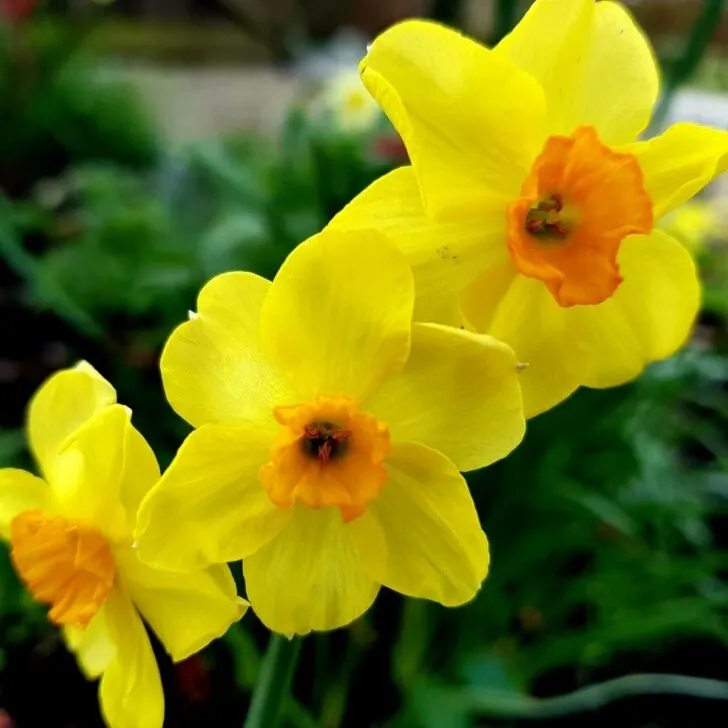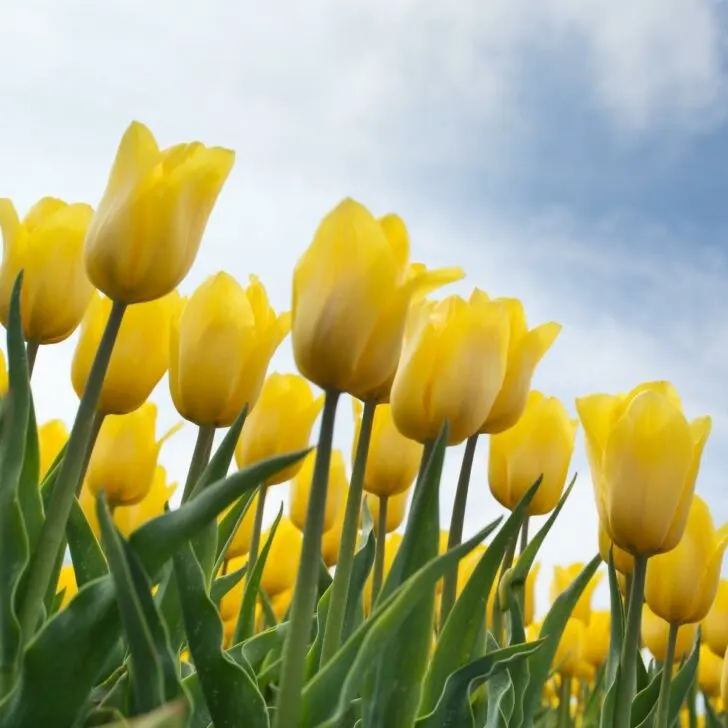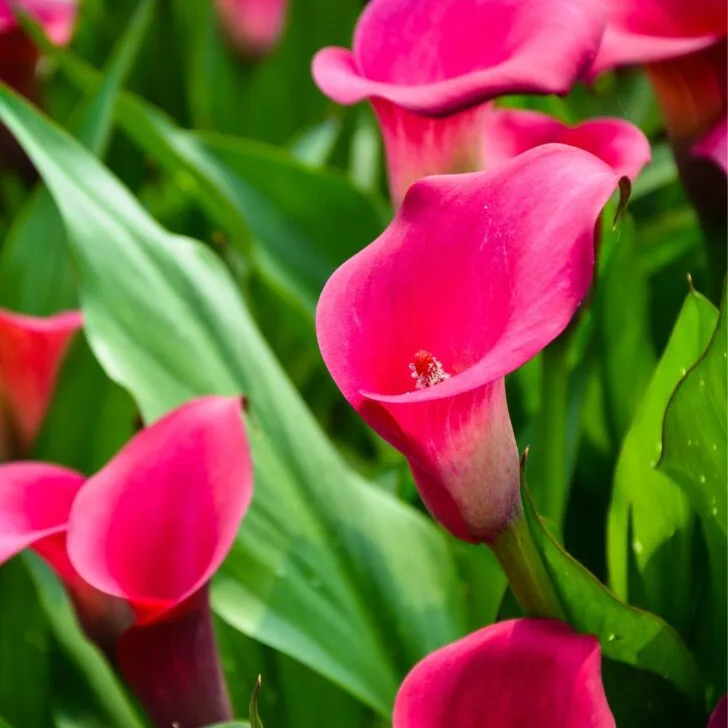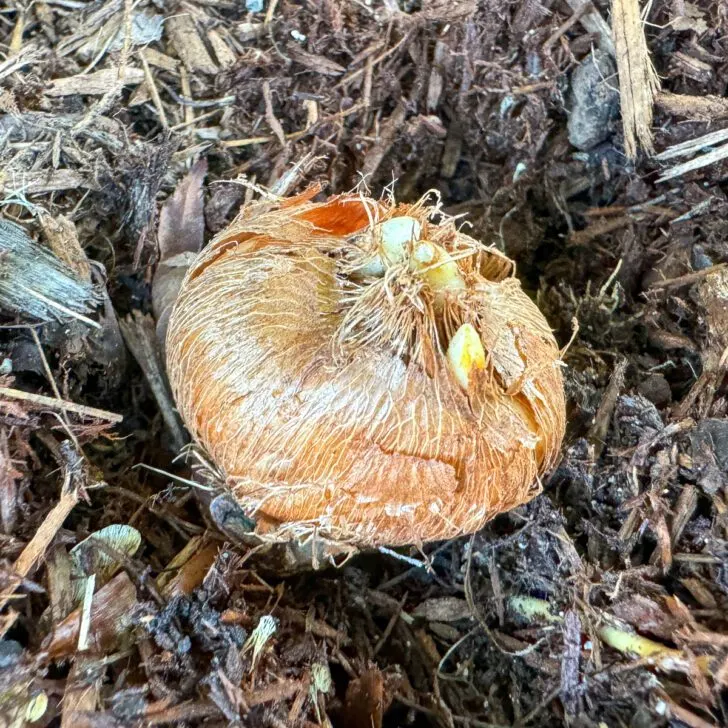Daffodils are one of the first flowers to bloom in the garden. Learn how to plant daffodil bulbs in fall for cheerful color in spring!
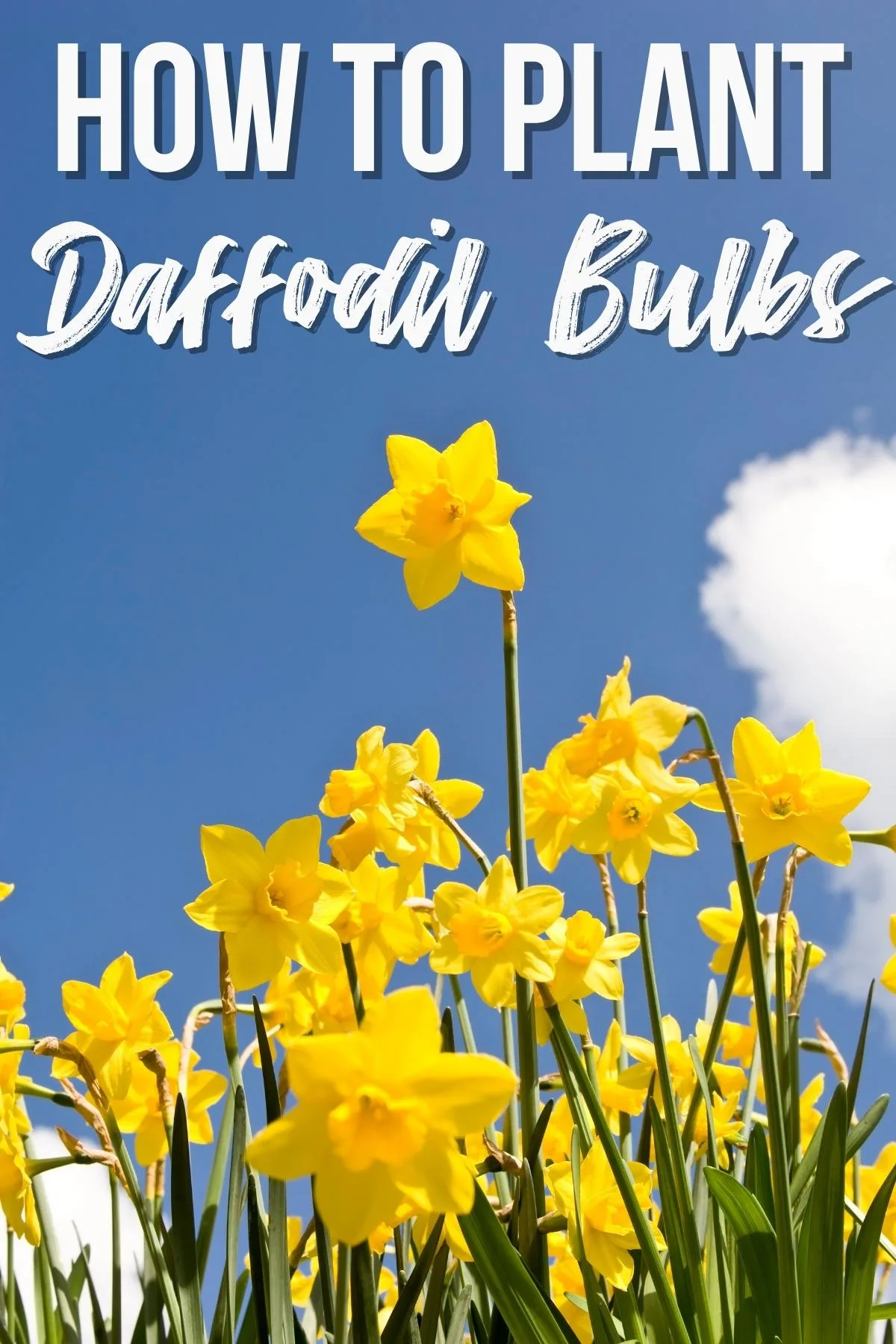
If you're looking for an easy way to bring vibrant spring color to your landscape at the end of winter, consider planting daffodil bulbs. Most varieties will naturalize and come back year after year.
Daffodils grow well just about anywhere in your garden, and can even tolerate a bit of shade. Their cheerful yellow trumpet-shaped blossoms are one of the first signs that spring has finally arrived!
But to enjoy this colorful show, you need to think ahead. Fill your garden beds with daffodil bulbs in late fall to give them time to root before the weather warms up again.
This post contains affiliate links for your convenience. Purchases made through these links may earn me a small commission at no additional cost to you.
Benefits of Planting Daffodil Bulbs
Daffodils are easy to grow, and their sunny yellow blossoms can make your garden come to life early in the growing season. They usually bloom before the trees leaf out, so you can plant them underneath without it becoming too shaded.
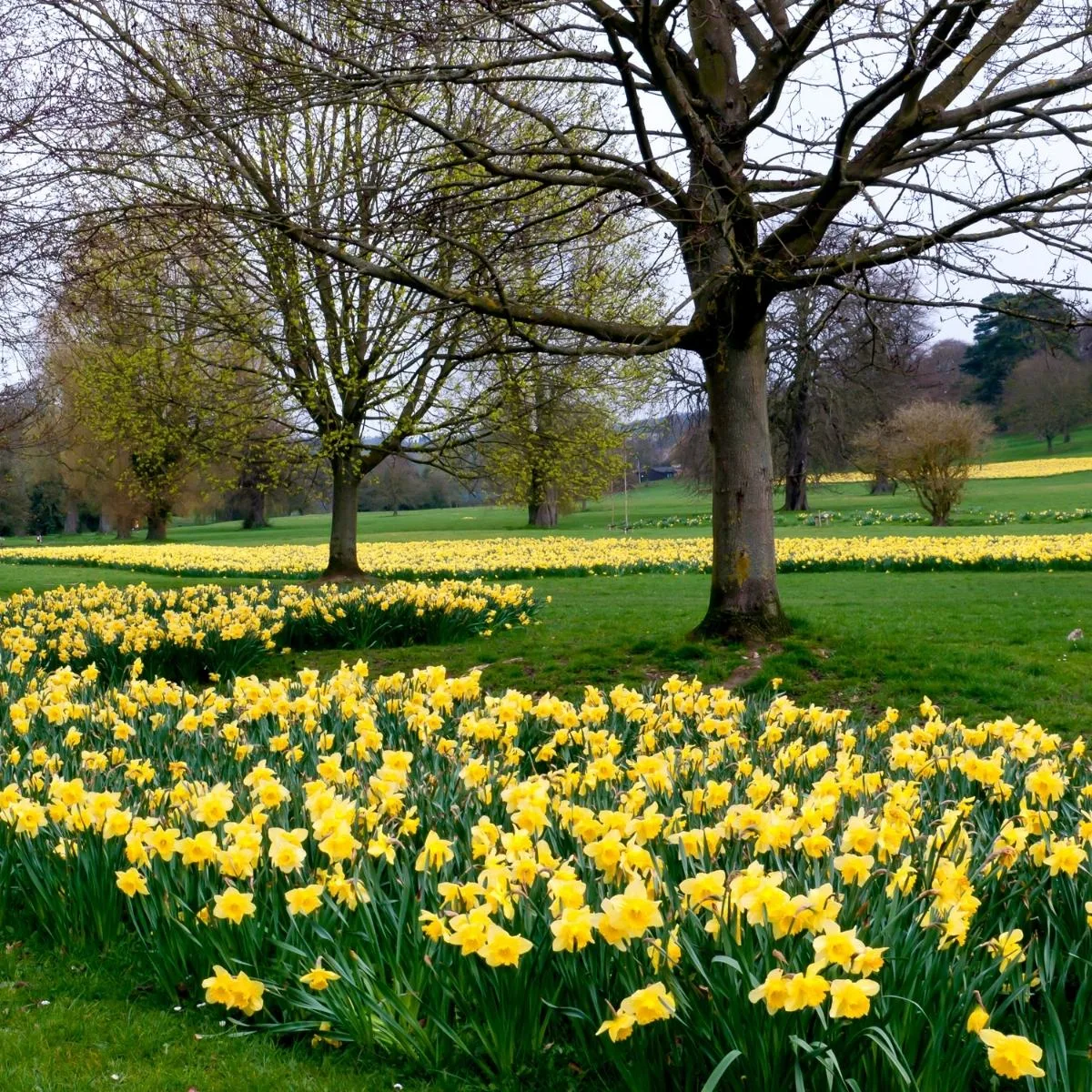
Deer and rodents do not like to eat these plants, so you don't have to worry about squirrels digging up the bulbs or deer munching on the foliage.
Best of all, daffodils are perennials, so the bulbs need little care to keep blooming year after year. Many varieties will naturalize and multiply, so you'll get a bigger clump next season!
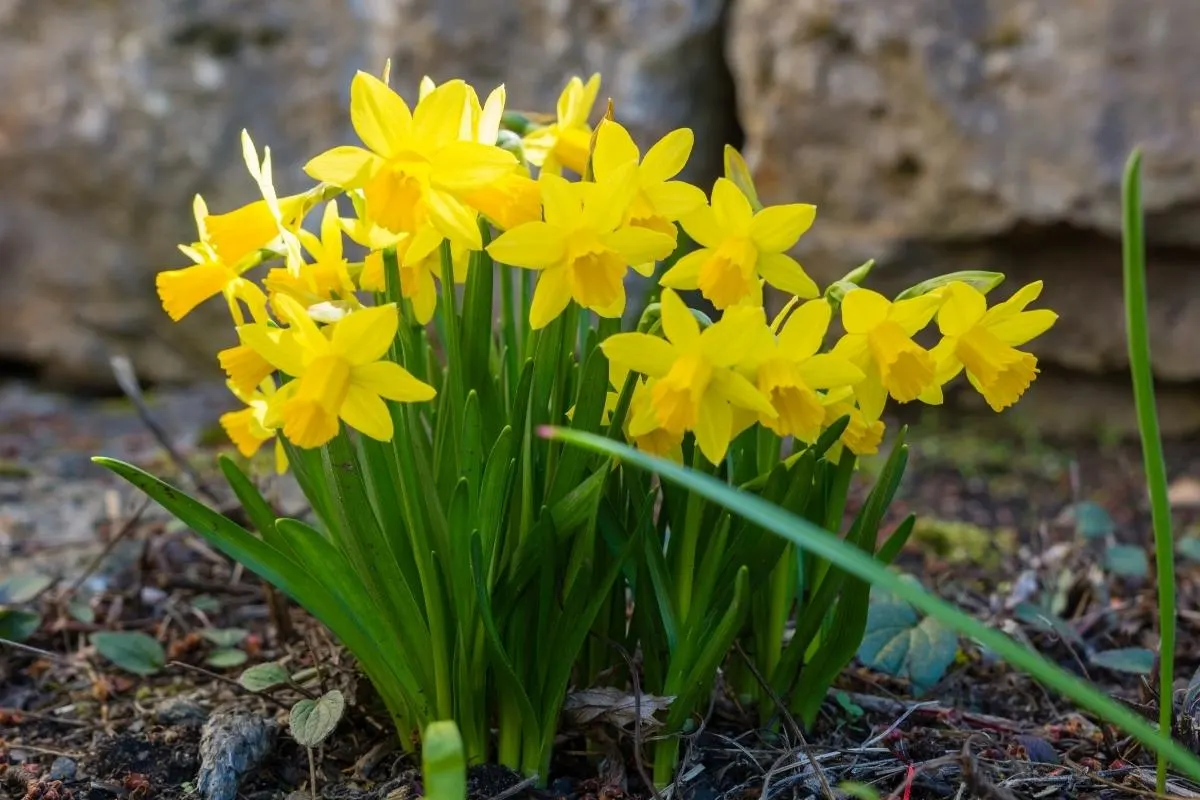
Where to Get Daffodil Bulbs
When looking for bulbs, remember that good-quality bulbs grow more vigorously and produce giant, brighter flowers. There are 13 species of daffodils to choose from and at least 25,000 cultivars, so you can find varieties for any garden design.

This year, I ordered an assortment of daffodil bulbs from Colorblends, a bulb wholesaler that also sells to the public in larger quantities. They mix fifteen different varieties into a single bag, each with a different bloom time, for a longer color show!
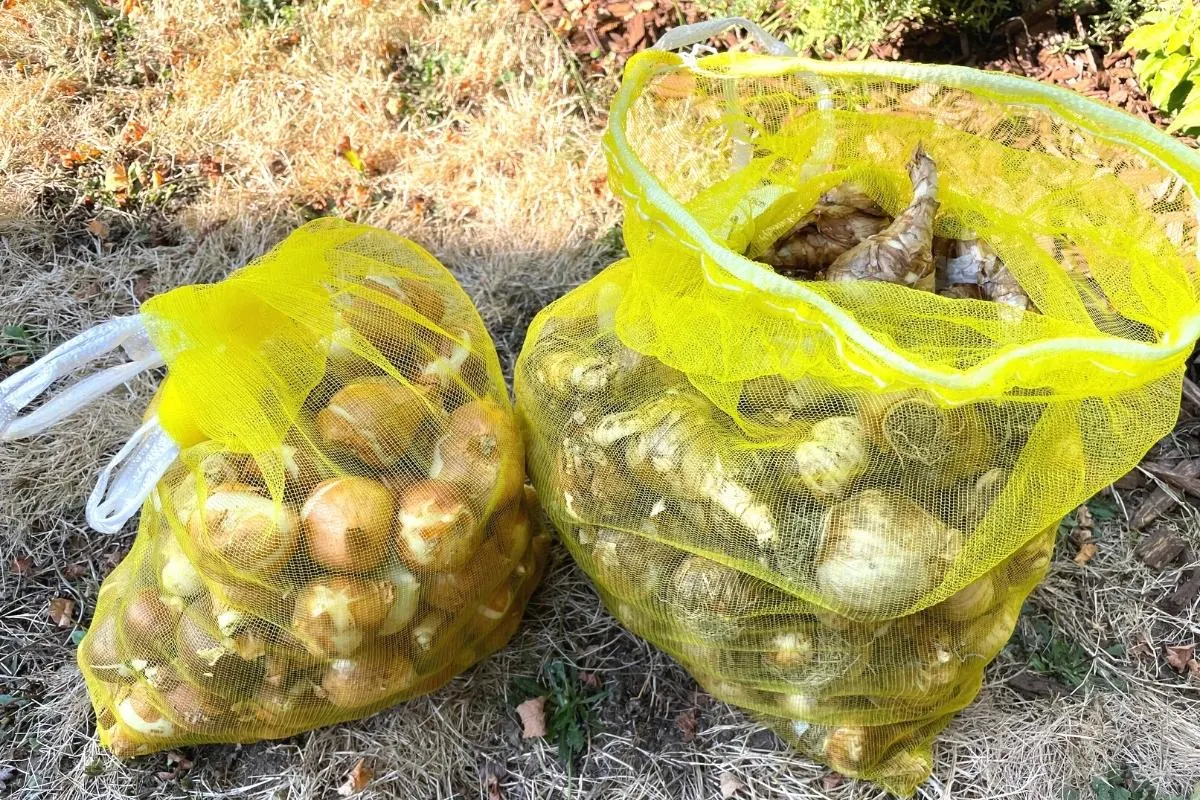
Where to Plant Daffodil Bulbs
You can plant daffodils in almost any part of the U.S. in zones 3-8. Some varieties are suited for warmer climates in zones 9 or 10, but check that they were pre-chilled first. Like most flower bulbs, daffodils need excellent soil drainage, or the bulbs will rot.
You can plant daffodils in full sun or partial shade as long as they get at least six hours of direct sun exposure each day. Because they need good drainage, raised beds, slopes, and containers make a perfect home for daffodil bulbs.
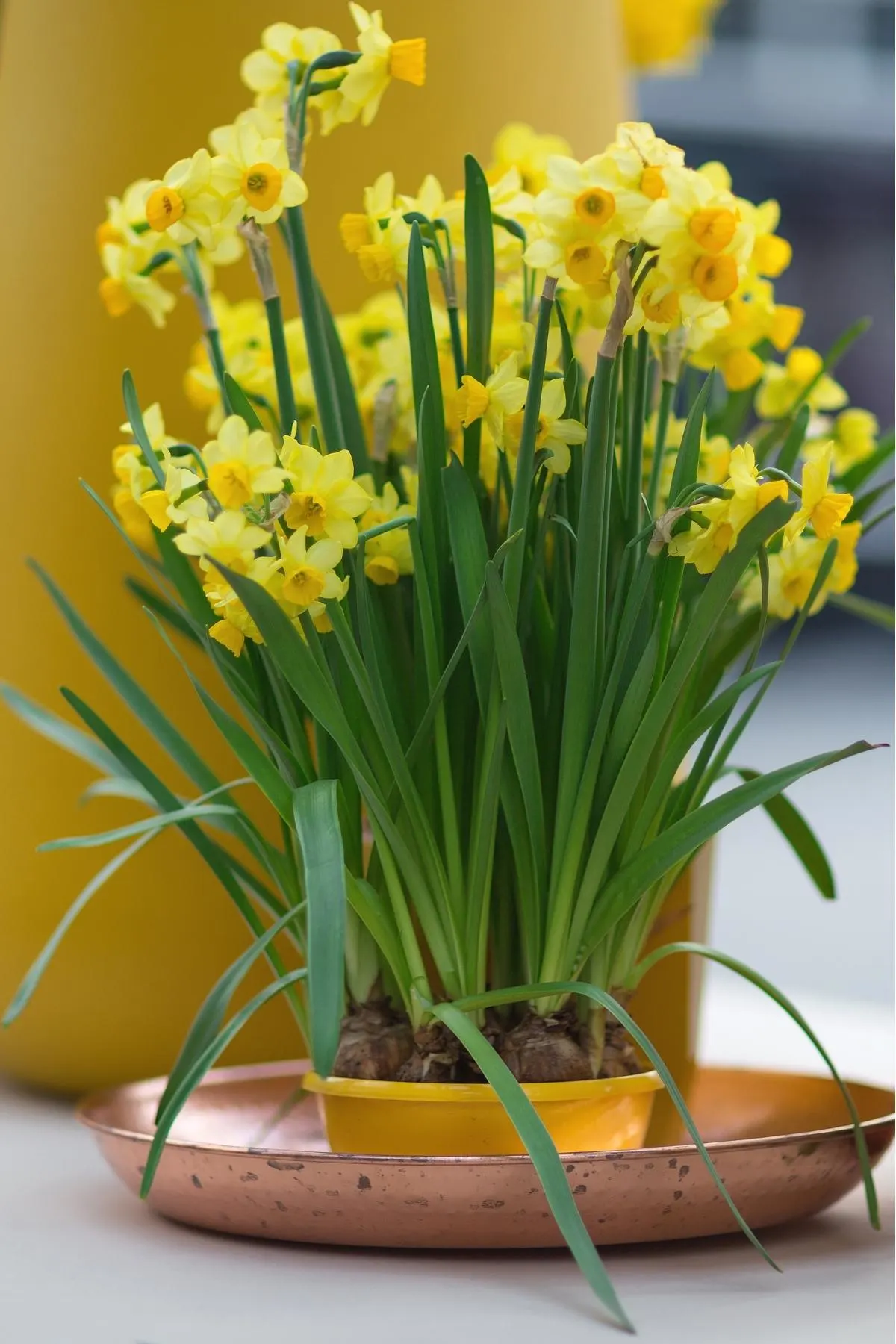
In addition, daffodil bulbs prefer slightly acidic soil, so if your soil is alkaline, consider adding a soil sulfur amendment to bring the pH down. Daffodils don't need incredibly fertile soil to grow, but adding compost or fertilizer can increase their vigor and produce the brightest displays of blooms and the greenest foliage.
When to Plant Daffodil Bulbs
The best time to plant daffodil bulbs is in the fall, at least two weeks before the first frost date. Depending on your location, this can be anywhere from October to early December.
Daffodil bulbs need a chill period of at least 12 weeks, where the temperature is between 40° to 45° to bloom when the weather warms up in spring. If your area doesn't have that many cold nights, you can order pre-chilled daffodil bulbs or varieties bred for warmer climates.
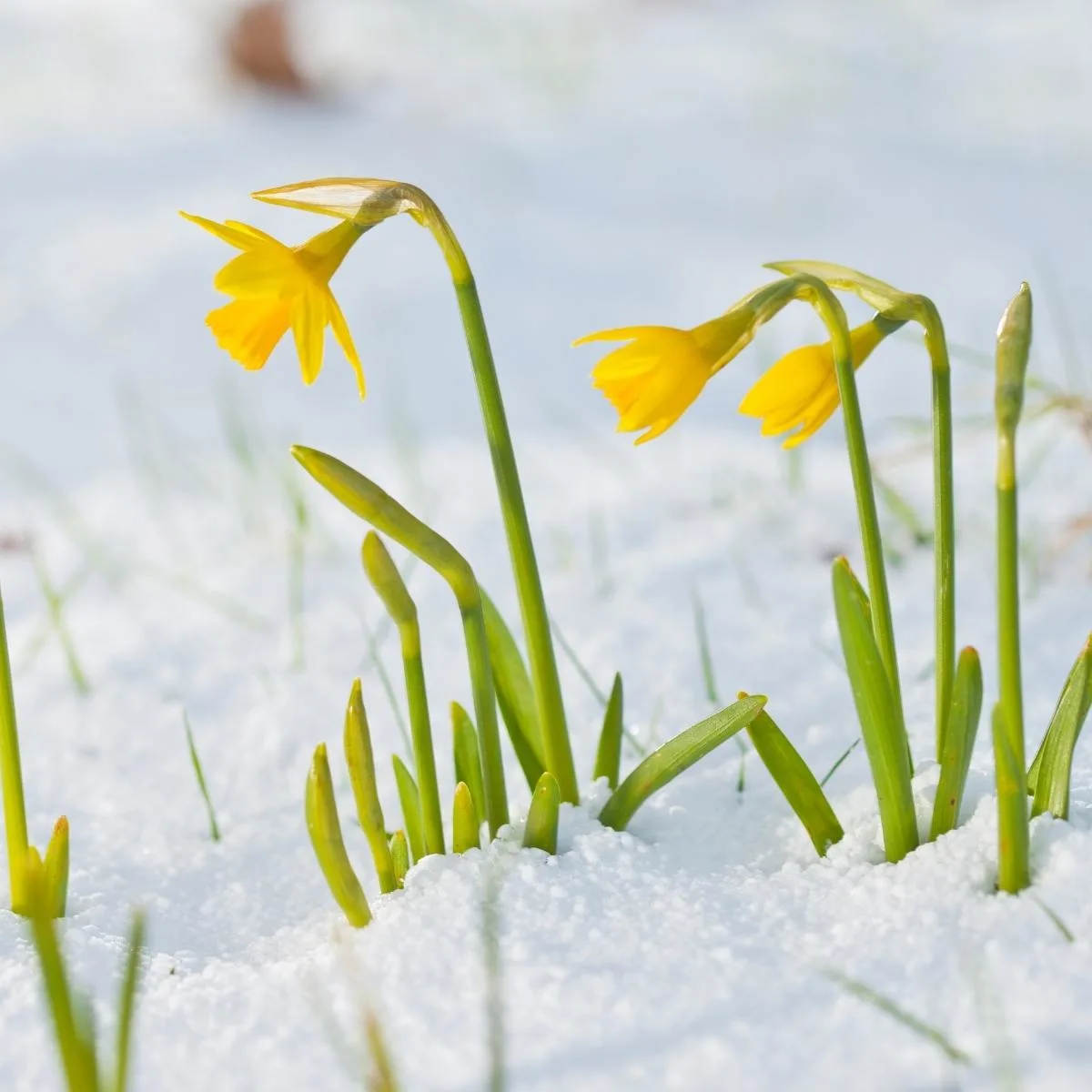
Fall planting allows the bulbs to develop a healthy root system before cold weather sets in. In colder locations, planting earlier in the fall helps establish the bulbs and avoids digging in semi-frozen soil.
You can also force your daffodil bulbs to bloom indoors in the winter! Check out this article for tips on how to force bulbs indoors.
How Deep to Plant Daffodil Bulbs
As with other flower bulbs, always put the bulb in the ground with the pointy end facing upward. Set the bulbs approximately two to three times as deep as the bulb's diameter.
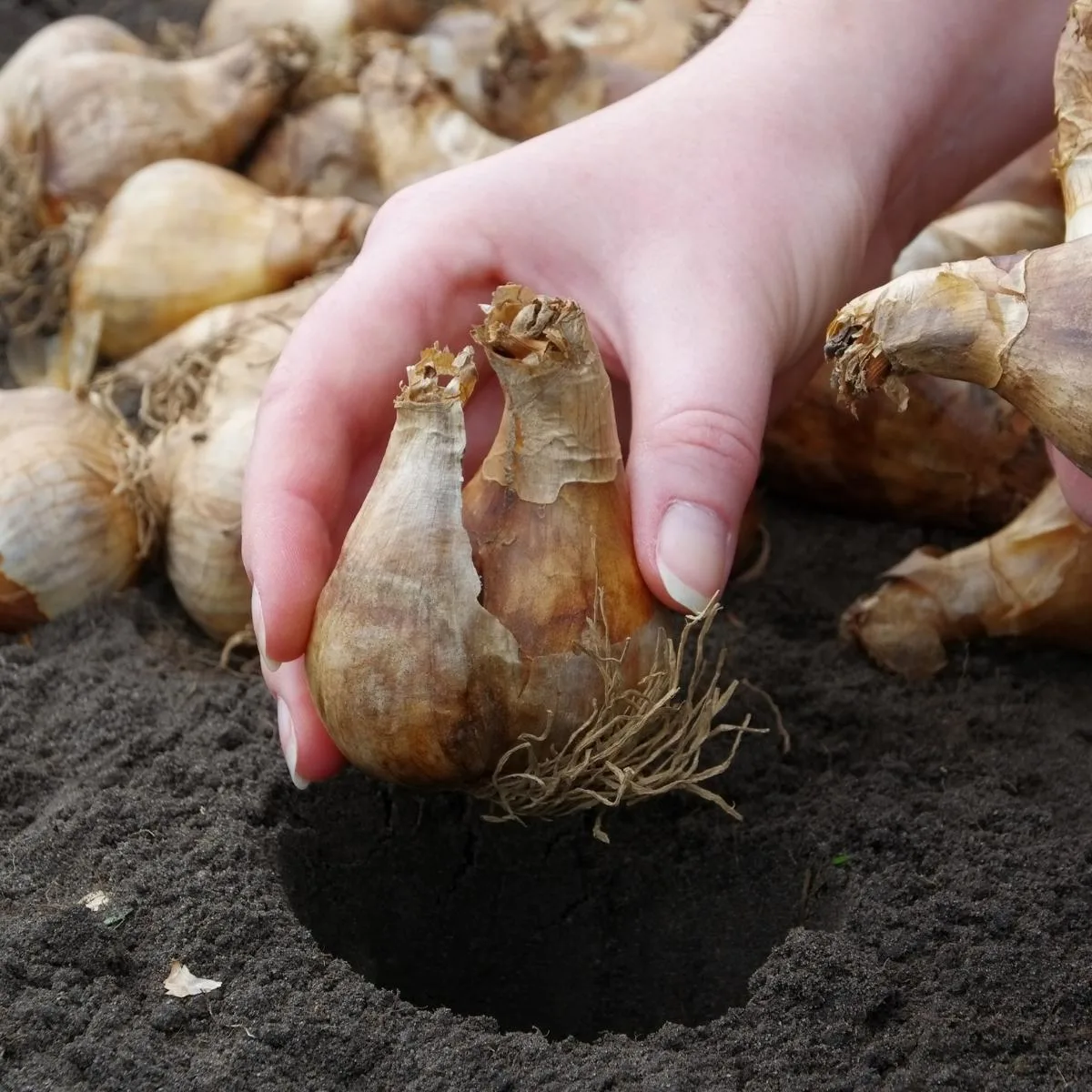
For example, if the bulb is 1 ½" across, plant it at least 3 inches deep. If the bulb is 2 inches in diameter, plant it at 4 inches in depth.
How Far Apart to Plant Daffodil Bulbs
You can crowd daffodil bulbs a bit to create a stunning solid block of color when they bloom, but leave at least 3 to 6 inches of space between them so they can access sufficient soil nutrients as they grow.
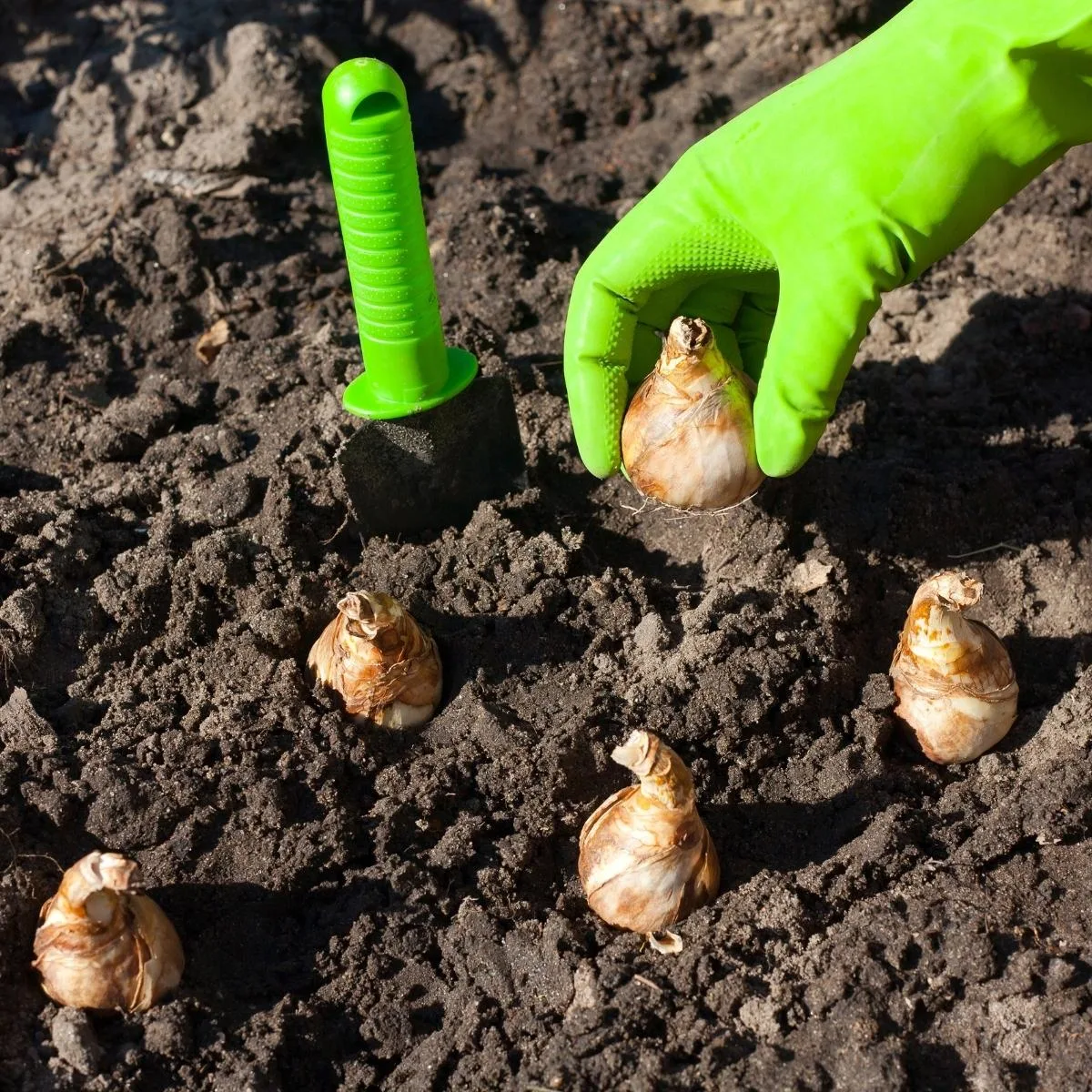
For a natural display, create clusters of bulbs. If you want a colorful border, plant them in a straight row instead. It may be easier to dig out an entire area to the desired depth and place the bulbs on the ground, then cover them with soil.
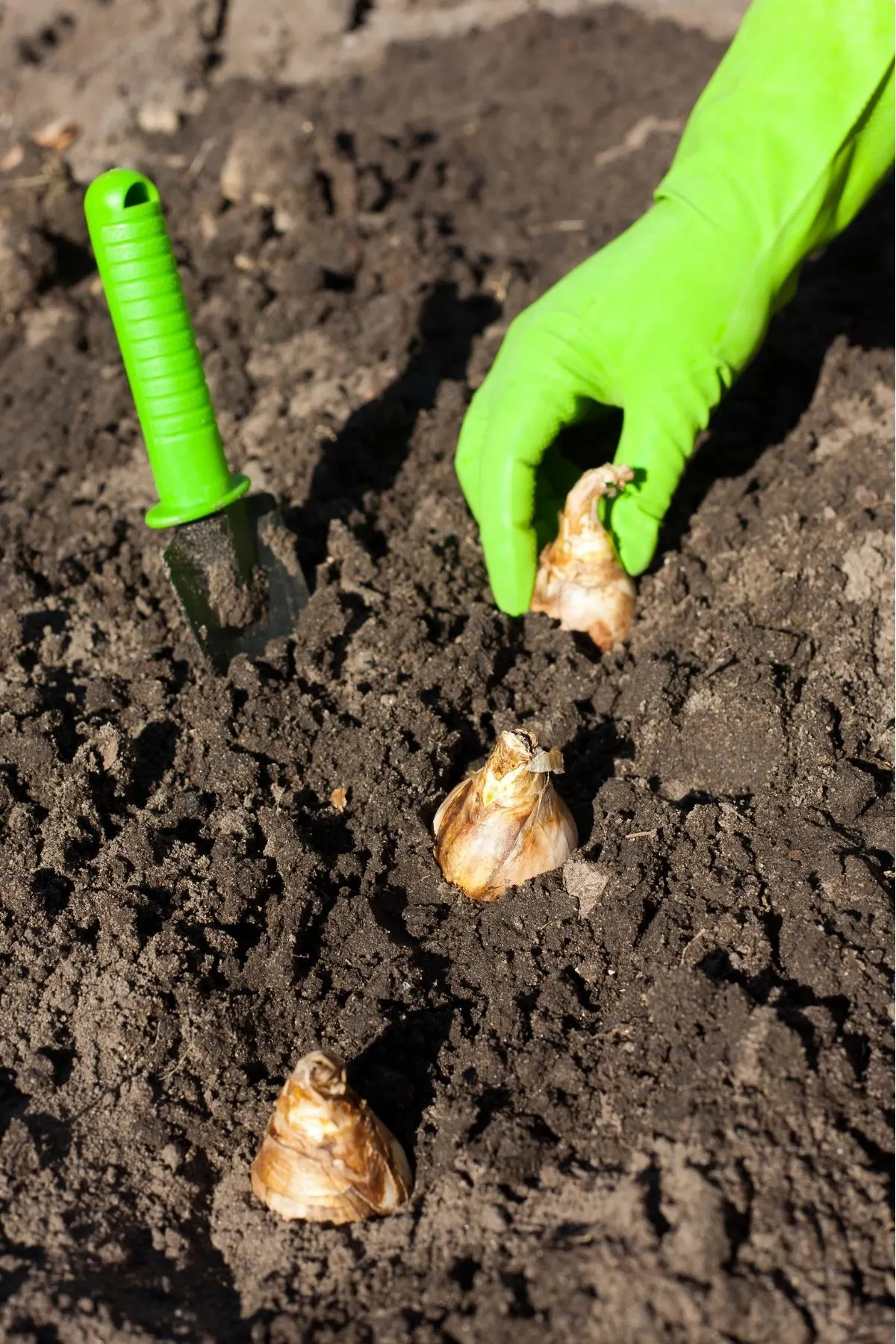
Caring for Daffodils after Planting
If your daffodils are a bit lackluster, give them a dose of flower bulb fertilizer that is low in nitrogen and high in potassium after they finish flowering. For example, a sprinkle of bone meal at the end of the growing season can give them a boost for next year.
If there is not much rain in spring before the bulbs bloom, water them once or twice a week so they do not dry out. Otherwise, the flowers might not appear.
After daffodils bloom, do not cut them down until the leaves dry out and turn yellow. The foliage continues to photosynthesize as long as it's green, nourishing the bulbs and making them strong for next year's growth.
If you want to use daffodils as cut flowers, keep in mind that the stems produce a substance that can cause other flowers to wilt. For this reason, it's best to display them in solitary arrangements or soak the stems and rinse them well before adding them to a vase of other flowers.
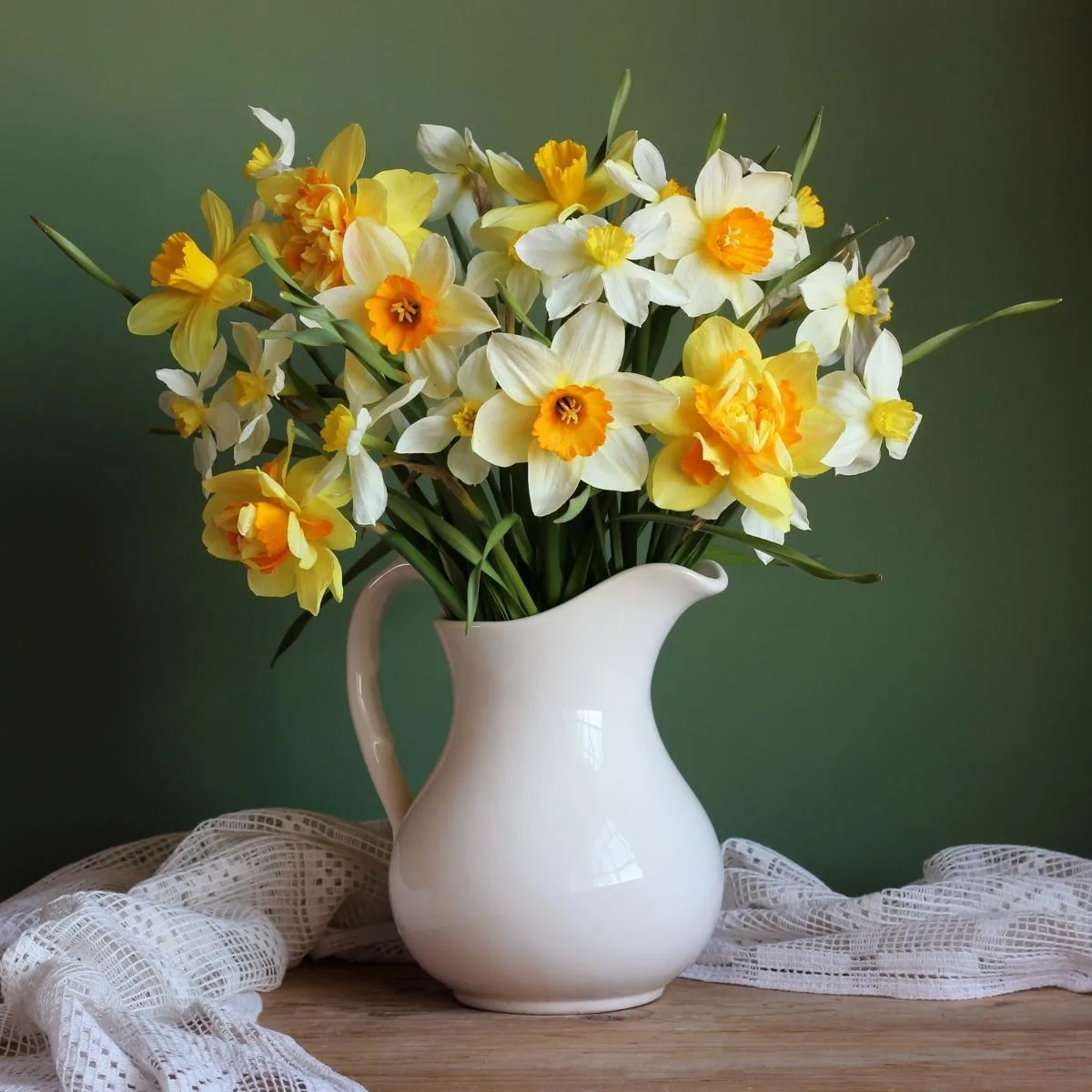
Also, the toxic substance in daffodil stems irritates some people's skin, so you might want to wear gloves while handling them.
Frequently Asked Questions about Daffodil Bulbs
Yes, daffodils are long-lived perennial bulbs that will bloom over and over once you plant them.
Yes, daffodils are long-lived perennial bulbs that will bloom over and over once you plant them.
The best time to plant daffodil bulbs is in the fall because it allows the bulbs to develop roots that feed the plant for robust spring growth. Nonetheless, if you have daffodil bulbs and want to put them into the ground in spring, they'll be fine, although they are not likely to flower until the following year.
Absolutely! Daffodils grow exceptionally well in containers and raised beds. However, they have deep roots, so use a container at least 12-inches deep and 8 to 12-inches in diameter. In addition, use a well-draining potting mix, and be sure the pot has drainage holes or the bulbs are likely to rot.


